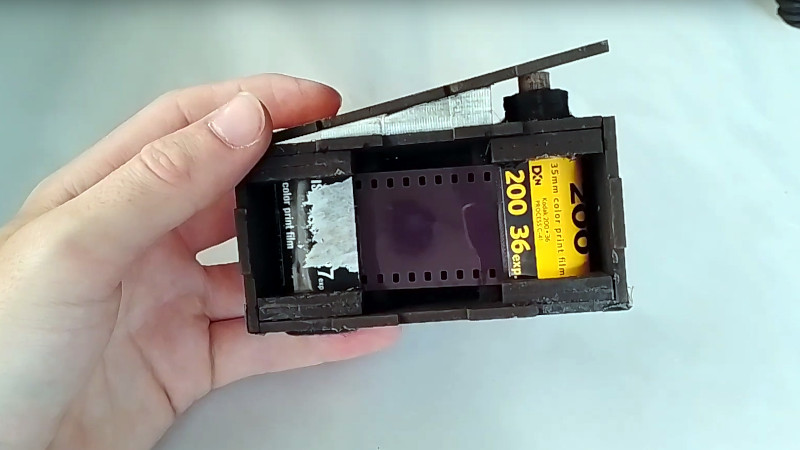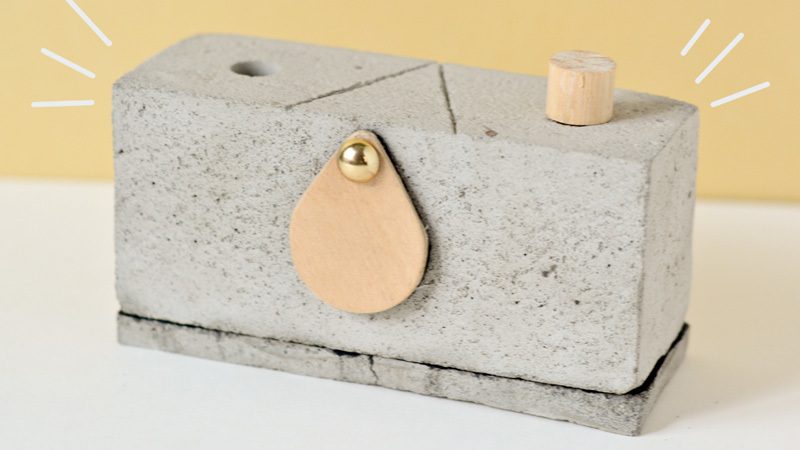One person like that
#pinholecamera
One person like that
4 Shares
2 Likes
How to Make a Telephoto Camera Lens Out of an Empty Pringles Can
![]()
In a new video from Fotodiox, photographer Sean Anderson shows how anyone can make a telephoto pinhole lens out of a few items like a soda can, tape, and an empty Pringles can.
Anderson says that photographers who might find themselves with some extra free time on their hands might enjoy creating fun and interesting photography products using food packaging that can be found around the house. In this particular project, he shows how an empty Pringles can be converted into a telephoto pinhole lens.
Previously, Anderson has shown how to turn a body cap into a pinhole lens, but because of how close the hole was to the sensor, the focal length was wide: he estimates it at around 24mm. He says that since then he has been thinking about ways to create a pinhole lens that was more zoomed in, like a telephoto lens.
"If you put some space between where you put your pinhole lens and your camera, it actually crops in on the pinhole image circle and it makes it a longer lens, closer to a 75mm or 100mm lens," he says. "This is great for photographers like me who like to shoot pinhole because it gives you a different focal length to work with."
While it is possible to use an extension tube and a lens cap pinhole lens to achieve this effect, Anderson wanted to try something a bit more unusual and make his own from scratch. To make one just like it, photographers will need just a few items: a "grab and go" sized pringles can, a soda can, some sewing needles, gaff tape, a box cutter, scissors, a 67mm Macro reverse ring, and a 77mm to 67mm step down ring.
![]()
After cutting the metal bottom off the Pringles can and cutting a whole in the center of the plastic top of the can, Anderson takes a strip of the soda can, pokes a hole in it, and tapes it to the center of the cut hole in the plastic lid. He covers the entire exterior of the pringles can and the interior of the plastic lid with gaffer's tape in order to reduce reflections and prevent light from leaking in.
He then tapes the two rings (which he screwed together) to the can so that he has a way to attach it to his camera.
![]()
The resulting lens can take both photos and videos, and Anderson shares a few examples below:
![]()
![]()
![]()
![]()
![]()
![]()
![]()
![]()
![]()
![]()
For the full detailed assembly instructions as well as further example images taken with the telephoto pinhole lens, make sure to watch the video above. For more from Sean Anderson, subscribe to the Fotodiox YouTube Channel.
Image credits: Photos by Sean Anderson.
#doityourself #diy #pinholecamera #pinholelens #seananderson #telephoto #telephotopinholelens
2 Shares
Photographer Launches DIY Large-Format Pinhole Camera Kits
![]()
A film photographer has launched a crowdfunding campaign for DIY pinhole camera kits with the aim of making large-format shooting affordable, accessible, and easy.
Set up by David Hancock, a photographer and writer who also shares educational material on YouTube, the Kickstarter campaign features large-format pinhole cameras -- 5119 Cameras -- that are designed to be built at home. Hancock shares that his project originated from a conversation with a photographer friend who was no longer able to use the fine controls on his cameras, which prompted Hancock to design simple cameras that could be used by anyone.
Hancock claims that he chose sheet film for this project to make the cameras simpler to build and because the format afforded quality results that could be achieved by anyone. The cameras are designed to be constructed by photographers of any level of building skill and, if constructed correctly, the designs promise to remain light-proof.
The largest camera kits are made out of custom-cut 7mm bamboo plywood. The insides of each camera are lined with thick, black, and light-absorbent felt instead of paint, further sealing them against light leakage. Hancock says that the choice of felt over paint ensures that the surface texture eliminates image hot spots that are caused by reflections that reconvene on the film plane and result in lost contrast due to internal reflections.
![]() The pre-production lineup for the three standard-format 5119 Cameras models
The pre-production lineup for the three standard-format 5119 Cameras models
The design consists of oversized parts and pieces that can be easily handled and the shutters employ easy resistance adjustments and also include a 52mm filter ring for filters or lens hoods. Hancock explains that to make these cameras customizable, all parts will arrive unfinished and untreated, which allows photographers to finish them by applying stains or treatment of choice. He says that this can also make for an educational project for children starting out in film photography.
The collection consists of four camera models -- The 45, Model 1; The 57, Model 1; The 810, Model 1; and The 410 Diptych, Model 1.
The 45, Model 1 is the smallest of the cameras in the lineup and is designed to be a compact, easy to use, and reliably shoot sheet film. It has a focal length of 90mm with an 84-degrees angle of view which approximates to 20mm full-frame equivalent.
![]() 5119 Cameras The 45, Model 1 | Fuji Velvia 100
5119 Cameras The 45, Model 1 | Fuji Velvia 100
The 57, Model 1 delivers the 5×7 format, which is particularly suited for shooting negatives for contact prints and, as Hancock says, "gives the darkroom photographer on a budget a way to also see their images easily made into actual, physical prints."
This model builds on the design and performance aesthetic of The 45, Model 1, and adds an element of high-art performance. The specifications include a focal length of 127mm and 81.3-degrees angle of view which translates to 22mm equivalent on full-frame.
![]() 5119 Cameras The 57, Model 1 | Foma 332 Photo Paper
5119 Cameras The 57, Model 1 | Foma 332 Photo Paper
The 810, Model 1 is the largest camera and shoots 8×10. Although the size and weight of the camera make it more difficult to carry and use, Hancock claims that it delivers "accordingly beautiful results." Well suited for landscape work, it has a focal length of 169mm with an 88-degrees angle of view which is an 18.5mm equivalent for full-frame cameras.
![]() 5119 Cameras The 810, Model 1 | Liquid Light brushed on Fiber Paper
5119 Cameras The 810, Model 1 | Liquid Light brushed on Fiber Paper
The 410 Diptych, Model 1 is possibly the most unusual camera in the lineup. Hancock is confident that no other Kickstarter campaign has released a 4×10 camera, particularly one that can alternately take two 4X5 film backs and create diptych images.
"This camera, a unique tool in the photographic world, aims to provide something that gives the photographer a panoramic pinhole option," he writes.
With a focal length of 159mm, the camera has an 87-degree horizontal angle of view and a 49-degree vertical angle of view which make for 19mm and 40mm full-frame equivalent, respectively.
![]() 5119 Cameras The 410 Diptych, Model 1
5119 Cameras The 410 Diptych, Model 1
Providing the campaign is successfully funded, Hancock will order the parts for the kits and ship them to backers with no timeline specified as of yet. All backing options can be persued on Hancock's Kickstarter campaign page.
Disclaimer : Make sure you do your own research into any crowdfunding project you're considering backing. While we aim to only share legitimate and trustworthy campaigns, there's always a real chance that you can lose your money when backing any crowdfunded project.
#doityourself #equipment #news #crowdfunded #crowdfunding #diy #diypinholecamera #kickstarter #largeformat #pinhole #pinholecamera



